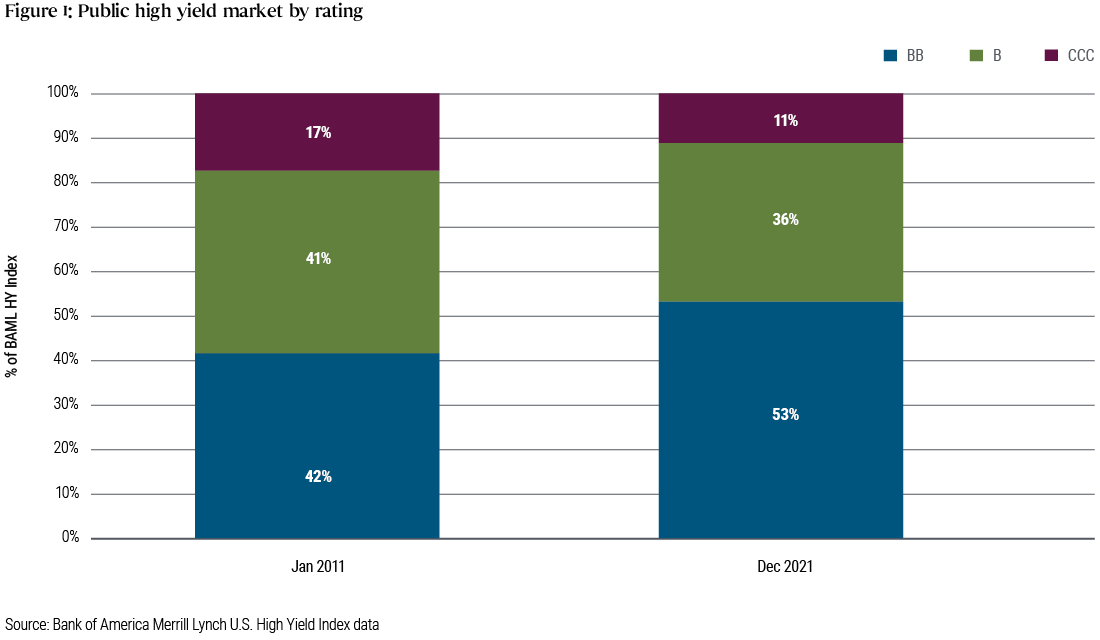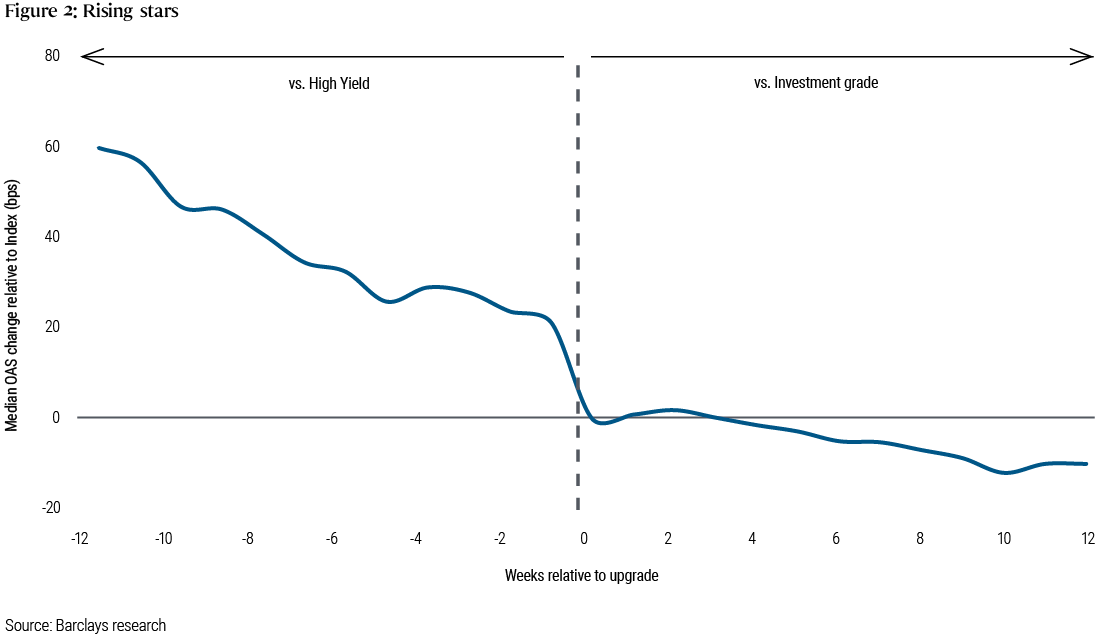Spotting Opportunities in the High Yield Ratings Migration
Our outlook for the high yield market for 2022 is range-bound, as rising rates are expected to be offset by strong fundamentals, favorable technicals, and a fair valuation backdrop. We believe there are opportunities for active investors, such as identifying possible rising stars – companies with high yield credit ratings that are likely to be upgraded to investment grade – well before the market does, as well as spotting companies with deleveraging catalysts that have the potential to generate above-market returns.
We expect the high yield market to follow PIMCO’s secular themes over the next five years, with returns becoming more subdued for the asset class. That said, we also expect disruption within industries and divergence among credits to result in increased spread dispersion within the market. For example, companies that have pricing power and are able to pass on higher input costs, such as raw materials and labor, appear poised to outperform price-takers.
High yield moves higher in quality
The high yield market has become higher in quality in the past decade, and the COVID-19 environment has contributed to the acceleration of that trend. Ratings quality within high yield has never been higher, with over 50% of the market rated BB (see Figure 1).

If one were to overlay the ratings composition of 2011 with the current spread-per-rating cohort, the high yield market would be 50-75 basis points (bps) wider than current levels. The higher quality is also substantiated by low default rates and paltry distressed ratios. The dollar-weighted global high yield default rate ended 2021 at a record-low 0.3%, according to Moody’s, while just 1.97% of the face value of the Bank of America high yield index is now classified as distressed.
A key reason for this shift up in quality is that much of the financing for M&A and leveraged buyouts has been moving away from bonds to loan and private credit markets. Additionally, the high yield market experienced about $230 billion in fallen angel volume – the amount of investment grade debt downgraded to high yield – in 2020, according to Goldman Sachs, while many of the weakest companies defaulted.
Outlook is range-bound
For 2022, we expect high yield fundamentals to remain strong and a default rate in the low-single digits. The technical backdrop should also be favorable, as our analysis has identified $250 billion-$300 billion of notional bonds that could be upgraded from high yield to investment grade in the next 18 months. Also, J.P. Morgan estimates net supply of new bond issuance will be down 3% year-over-year in 2022, to $185 billion.
Though valuations may appear rich by some measures, the recently improved market fundamentals also appear to imply lower risk across high yield than in previous years. For example, energy tends to be one of the more volatile sectors in high yield, and that volatility is expected to be more subdued in 2022 given higher oil and natural gas prices entering the year.
We foresee two primary sources of risk in the high yield market for 2022. The first is volatility caused by expectations of rising interest rates, and the second is companies turning to shareholder-friendly actions at the expense of lenders when trying to support equity valuations.
High yield in 2022, investment grade in 2023?
Although spread dispersion overall is low in the high yield market, we expect opportunities still exist for forward-looking, active investment managers. For example, when a company moves from high yield to investment grade, much of the spread tightening typically occurs six to 12 months prior to the upgrade (see Figure 2). As such, it is important to identify those rising stars before the upgrades occur and before the market widely anticipates them.

Because PIMCO uses proprietary credit ratings that can take forward-looking factors into consideration, our ratings differ about one-third of the time from those of credit-rating companies such as Moody’s and S&P. Such differentiation can be a factor in identifying rising stars well in advance of the market and benefitting from the subsequent spread tightening.
Other potential investment opportunities include looking for companies that have deleveraging catalysts, such as being bought by a larger, investment grade acquirer. PIMCO’s analysts cover credits across the quality spectrum within an industry, which can help to identify assets that could become such acquisition targets down the road.
For more on the investing landscape in 2022, see our Asset Allocation Outlook, “Opportunity Amid Transformation .”
Andrew Jessop is a managing director and high yield portfolio manager. Sonali Pier is a managing director and portfolio manager in the Newport Beach office, focusing on high yield and multi-sector credit opportunities. Sabeen Firozali is a senior vice president in the New York office, focusing on corporate credit business strategies.
